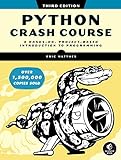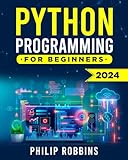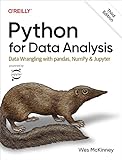To create a Docker image of pandas to AWS Lambda layers, you first need to create a Dockerfile with the necessary dependencies for pandas. This includes installing pandas and any other libraries required for your Lambda function.
Next, you can build the Docker image using the command docker build -t my-pandas-image . This will create a Docker image with pandas installed.
Once the Docker image is built, you can extract the pandas library from the image and create a Lambda layer using the AWS CLI or the Lambda console. You can then attach this layer to your Lambda function to use the pandas library in your AWS Lambda environment.
By following these steps, you can create a Docker image of pandas and use it as a Lambda layer in AWS.
What is the difference between Docker and containerization technologies?
Docker is a specific software platform that uses containerization technology. Containerization is a type of virtualization technology that allows applications to be packaged along with their dependencies and run consistently across different computing environments. Docker is one of the most popular tools for containerization, but there are other technologies available, such as Kubernetes and Apache Mesos. Containerization can refer to the broad concept of running applications in containers, while Docker is a specific tool that facilitates this process.
How to create a Dockerfile for a Python project?
To create a Dockerfile for a Python project, follow these steps:
- Create a new file named "Dockerfile" in the root directory of your Python project.
- Add the following lines to your Dockerfile:
1 2 3 4 5 6 7 8 9 10 11 12 13 14 15 16 17 18 19 20 |
# Use an official Python runtime as a parent image FROM python:3 # Set the working directory in the container WORKDIR /app # Copy the current directory contents into the container at /app COPY . /app # Install any needed packages specified in requirements.txt RUN pip install --no-cache-dir -r requirements.txt # Make port 80 available to the world outside this container EXPOSE 80 # Define environment variable ENV NAME World # Run app.py when the container launches CMD ["python", "app.py"] |
- Update the Dockerfile with any specific requirements or commands needed for your Python project. For example, you may need to specify a different Python version or add additional packages.
- Build your Docker image by running the following command in the terminal:
1
|
docker build -t my-python-app .
|
Replace "my-python-app" with the desired name for your Docker image.
- Run a Docker container using the following command:
1
|
docker run -p 4000:80 my-python-app
|
This command will run your Python project in a Docker container and make it available on port 4000 on your local machine.
Your Python project should now be running in a Docker container!
How to deploy a Python application to AWS Lambda?
To deploy a Python application to AWS Lambda, follow these steps:
- Create a new Lambda function in the AWS Management Console.
- Choose Python 3.x as the runtime for your Lambda function.
- Upload your Python code as a ZIP file or directly in the code editor provided by AWS Lambda.
- Set up any necessary environment variables or configurations in the Lambda console.
- Configure the triggers for your Lambda function, such as API Gateway, S3 events, or CloudWatch events.
- Save and test your Lambda function in the console to ensure it is working correctly.
- Once you are satisfied with the setup and testing of your Lambda function, click on the “Deploy” button in the AWS Lambda console to deploy your Python application to AWS Lambda.
- Monitor and debug your Lambda function as needed using the AWS Management Console or other monitoring tools provided by AWS.
What is the purpose of a Dockerfile?
A Dockerfile is a text document that contains all the commands a user could call from the command line to assemble an image. The purpose of a Dockerfile is to define the environment and configuration settings needed to run an application within a Docker container. It specifies the base image, sets up any dependencies, copies files into the container, and configures how the application should be run. By creating a Dockerfile, developers can easily package and distribute their applications as portable containers that can run on any system that supports Docker.









